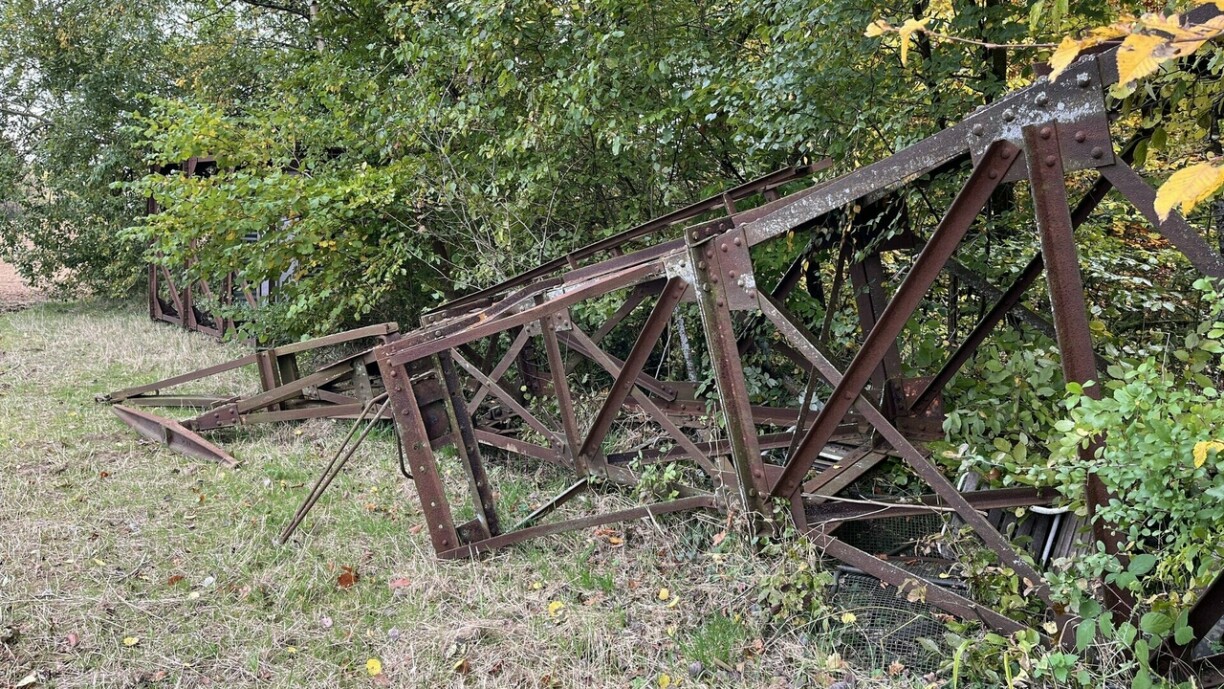
On Friday, 3 October, local resident Alain Zimmermann was walking his dog through the Rumelange forest, as he does every day. On his usual route, he always passed by an old metal mast: a relic of the region’s mining past that had stood there since his childhood. But that morning was different.
From a distance, he noticed movement and noise: the farmer who owns the field was using his tractor to rip the mast from the ground. Zimmermann later explained that the structure was torn in two, first the top section, then the concrete base, before being pushed to the edge of the woods where it would not be visible from the road.
According to the Rumelange municipality, the farmer had no permit to remove the structure. Mayor Henri Haine expressed his disappointment, calling the destruction “deeply regrettable”, since it represented part of the town’s industrial heritage. He said there was no clear reason why the pillar had suddenly become an inconvenience and added that the owner should at least have consulted the local authorities beforehand.
The metal supports, measuring around two by two metres and of varying height, were originally built in 1906 by the Cologne-based company Pohlig. They formed part of a 12.7-kilometre aerial cableway that carried iron ore from the French town of Ottange across the Luxembourg border, through Belval, and into Differdange. The installation remained in operation until 1980, serving as an essential link in the country’s once-thriving steel industry.
Historian Denis Klein, a volunteer at the National Mining Museum in Rumelange, explained that while the cableway no longer has any economic function, it remains a powerful symbol of Luxembourg’s industrial identity, as a nostalgic reminder of the Minett region’s history, where the hum of the cableway was once part of everyday life.
Zimmermann also stressed that many residents of the area are proud of the steel industry’s history, adding that the remaining masts are “symbolic remnants” of the area’s past and form an integral part of its heritage, even though the cableway itself disappeared decades ago.
Some of these structures are still visible today, notably in Esch-sur-Alzette and Rumelange, with two well-preserved pillars standing near the National Mining Museum, one of which still carries an original gondola. Several others can be found scattered throughout the nearby woods.
Municipal authorities from Rumelange have now announced plans to protect the remaining masts at a local level to prevent similar incidents. Mayor Haine stated that the municipality also intends to contact the farmer responsible to determine whether any of the destroyed pillar’s fragments can be salvaged.
Because the demolished mast was not listed as a protected monument, the farmer is unlikely to face legal penalties. However, the municipality is still examining potential legal action, since the demolition was carried out without authorisation.
RTL reached out to the landowner for comment, but he could not be reached during the investigation.